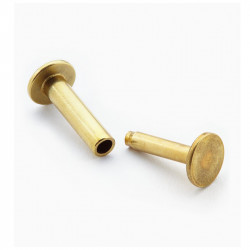

Vous devez être connecté
Category


Les photos sont à titre informatif uniquement. Voir les spécifications du produit
please use latin characters
Hot forming is a process in the manufacture of industrial fasteners such as bolts, screws and rivets. Heat is used to soften the metal which is usually a sheet, bar, tube or wire and then pressure is used to alter the shape of the metal by performing any of the following operations:
| Heading | Forming a head on a bolt, screw or rivet |
| Blanking | Cutting a whole piece from sheet metal |
| Punching | Cutting a hole |
| Slotting | Cutting of elongated holes |
| Perforating | Cutting of a group of holes |
| Trimming | Cutting away excess metal |
| Shearing | Cutting in straight line completely across piece |
| Bending | Producing single, double, straight flange, edge hem, curl or double hem bends |
|
|
Cold Form
|
Warm Form
|
Hot Form
|
|
Temperature
|
Ambient
|
400-900 °F
|
1300-2000 °F
|
|
Die Pressure
|
High
|
Lower
|
Lowest
|
|
Stress
|
Residual
|
Medium
|
Minimal
|
|
Grain Flow
|
Good
|
Better
|
Best
|
|
Scaling
|
None
|
Less
|
More
|
Advantages
Êtes-vous intéressé par ce produit? Avez-vous besoin d'informations supplémentaires ou d'une tarification individuelle?
Ajouter à la liste de souhaits
Vous devez être connecté
Hot forming is a process in the manufacture of industrial fasteners such as bolts, screws and rivets. Heat is used to soften the metal which is usually a sheet, bar, tube or wire and then pressure is used to alter the shape of the metal by performing any of the following operations:
| Heading | Forming a head on a bolt, screw or rivet |
| Blanking | Cutting a whole piece from sheet metal |
| Punching | Cutting a hole |
| Slotting | Cutting of elongated holes |
| Perforating | Cutting of a group of holes |
| Trimming | Cutting away excess metal |
| Shearing | Cutting in straight line completely across piece |
| Bending | Producing single, double, straight flange, edge hem, curl or double hem bends |
|
|
Cold Form
|
Warm Form
|
Hot Form
|
|
Temperature
|
Ambient
|
400-900 °F
|
1300-2000 °F
|
|
Die Pressure
|
High
|
Lower
|
Lowest
|
|
Stress
|
Residual
|
Medium
|
Minimal
|
|
Grain Flow
|
Good
|
Better
|
Best
|
|
Scaling
|
None
|
Less
|
More
|
Advantages
Votre avis ne peut pas être envoyé
Signaler le commentaire
Signalement envoyé
Votre signalement ne peut pas être envoyé
Donnez votre avis
Avis envoyé
Votre avis ne peut être envoyé
